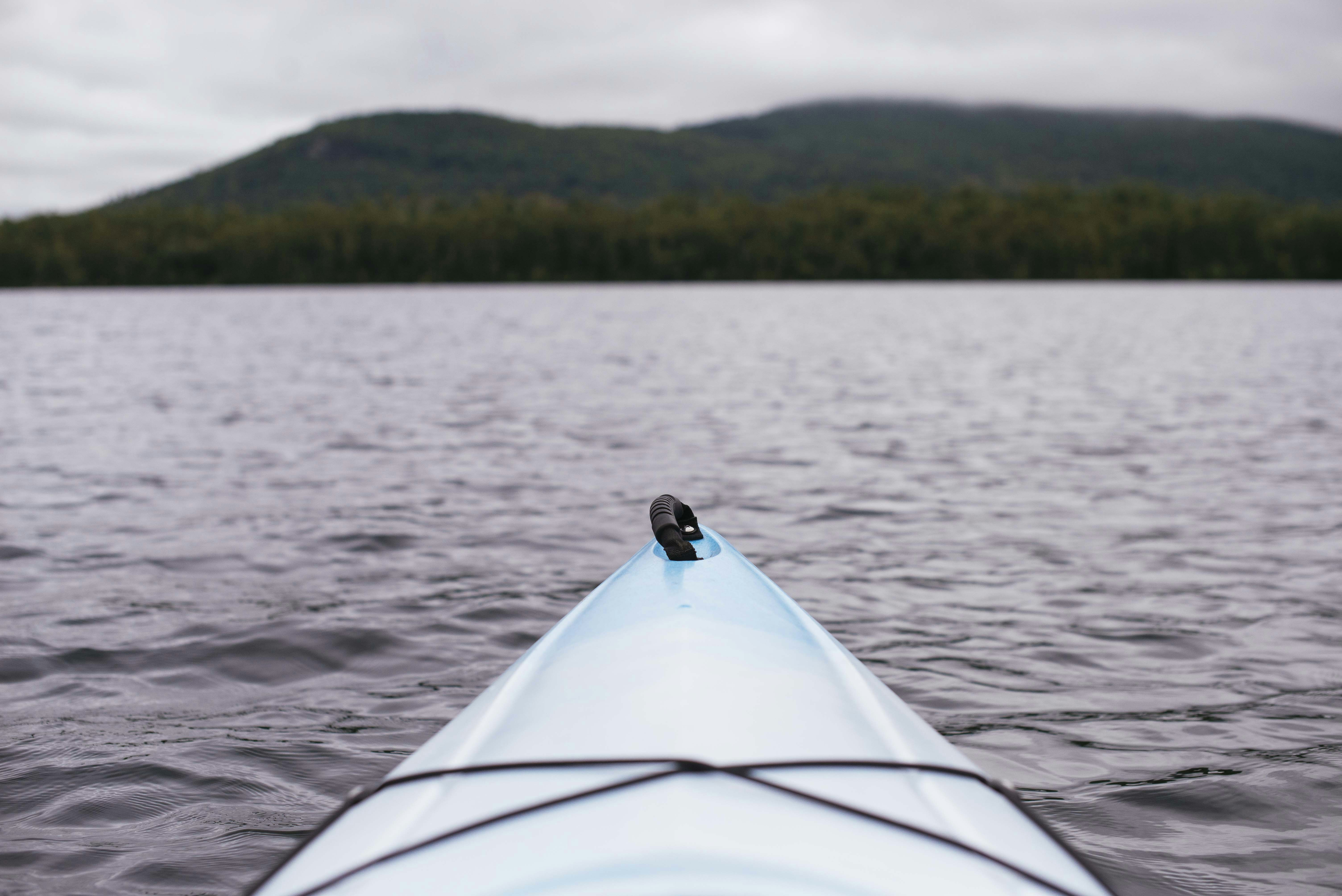So you’re wondering if it’s possible to install a kayak rudder system on your trusty canoe? You’re not alone! Many paddling enthusiasts have pondered this very question. In this article, we’ll explore the feasibility of adding a kayak rudder system to your canoe and discuss the potential benefits it can bring to your paddling adventures. Whether you’re seeking better maneuverability or enhanced control, stay tuned to find out if this unique combination is the perfect fit for you and your canoe!

What is a kayak rudder system?
Definition of a kayak rudder system
A kayak rudder system is an additional component that can be installed on a kayak to enhance its tracking and maneuverability. It consists of a rudder, which is a flat, fin-like structure, attached to the stern (back) of the kayak. The rudder can be controlled using foot pedals, allowing the paddler to adjust its position and angle to steer the kayak more efficiently.
Purpose of a kayak rudder system
The main purpose of a kayak rudder system is to improve the kayak’s tracking ability. Tracking refers to the kayak’s ability to maintain a straight course while paddling, especially in windy or choppy conditions. By adjusting the position and angle of the rudder, the paddler can counteract the effects of wind and currents, ensuring a smoother and more controlled paddling experience.
Can a kayak rudder system be installed on a canoe?
Compatibility of kayak rudder system with canoes
While kayak rudder systems are primarily designed for kayaks, it is technically possible to install them on canoes as well. However, due to the differences in design and structure between kayaks and canoes, there are several considerations to keep in mind before proceeding with the installation.
Considerations for installing a kayak rudder system on a canoe
Before installing a kayak rudder system on a canoe, it is essential to assess the canoe’s size, design, and compatibility with the rudder system. Canoes with a flat stern or transom may be more suitable for rudder installation, as they provide a stable and secure mounting point. Additionally, the weight capacity and balance of the canoe should be taken into account, as the added weight of the rudder system may affect its performance and stability.
Benefits of installing a kayak rudder system on a canoe
Enhanced tracking and stability
One of the significant benefits of installing a kayak rudder system on a canoe is the improved tracking and stability it provides. By using the rudder to counteract the effects of wind and currents, the paddler can maintain a straighter course and prevent the canoe from veering off track. This is especially beneficial when paddling in open water or challenging conditions.
Improved maneuverability
Another advantage of a kayak rudder system on a canoe is the increased maneuverability it offers. By adjusting the rudder’s position and angle, the paddler can easily navigate around obstacles, make tight turns, and maneuver in tight spaces. This can be particularly useful in rivers, narrow waterways, or when navigating through crowded areas.
Increased control in adverse weather conditions
Installing a kayak rudder system on a canoe can significantly enhance the paddler’s control in adverse weather conditions. In strong winds or rough waters, the rudder can help maintain stability and prevent the canoe from getting pushed off course. This added control can enhance safety and confidence while paddling in challenging environments.
Types of kayak rudder systems
Fixed rudder systems
Fixed rudder systems consist of a stationary rudder attached to the stern of the kayak. These rudder systems are typically made from durable materials such as fiberglass or plastic and are designed to withstand the forces exerted by the water. Fixed rudder systems offer simplicity and reliability, making them a popular choice among paddlers.
Smart rudder systems
Smart rudder systems, also known as pedal-assisted rudder systems, are more advanced versions of fixed rudder systems. These systems allow the paddler to control the rudder’s position and angle using foot pedals. The foot pedals are connected to the rudder via cables or a steering mechanism, providing the paddler with precise control and effortless adjustments.
Retractable rudder systems
Retractable rudder systems are designed to be lifted and lowered as needed. These systems are particularly useful when paddling in shallow water or when the rudder is not required. Retractable rudder systems can be manually operated or operated using a control mechanism, allowing for easy deployment and stowing of the rudder.
Factors to consider before installing a kayak rudder system on a canoe
Canoe size and design
The size and design of the canoe play a crucial role in determining the compatibility and feasibility of installing a kayak rudder system. Canoes with a flat stern or transom provide a more stable and secure mounting point for the rudder system. It is essential to assess the canoe’s overall dimensions, shape, and structural integrity to ensure a successful installation.
Weight capacity and balance
The addition of a kayak rudder system to a canoe introduces additional weight, which can impact the canoe’s weight capacity and overall balance. It is important to consider the weight limits specified by the canoe manufacturer and ensure that the rudder system does not exceed these limits. Balancing the weight distribution within the canoe is also crucial to maintain stability and prevent any adverse effects on paddling performance.
Paddle style and stroke technique
The installation of a kayak rudder system may require adjustments to paddle style and stroke technique. Paddlers accustomed to using a traditional canoe paddle may need to adapt their technique when using a kayak paddle, which is often used in conjunction with a rudder system. It is important to practice and become comfortable with the new paddle style and stroke technique to maximize the benefits of the rudder system.
Frequency and type of water conditions
Consider the frequency and type of water conditions in which you plan to use the canoe with a rudder system. If you primarily paddle in calm, flat water, the need for a rudder system may be less significant. However, if you frequently encounter windy, choppy, or challenging conditions, a rudder system can greatly enhance your paddling experience and control.
Installation process of a kayak rudder system on a canoe
Gathering the required tools and materials
Before beginning the installation process, gather all the necessary tools and materials. This typically includes a drill, screws, brackets, rudder assembly, foot pedals (if applicable), cables or steering mechanism (if applicable), and any other components specific to the chosen kayak rudder system.
Selecting the appropriate kayak rudder system
Ensure that the chosen kayak rudder system is compatible with the canoe and suits your specific needs. Consider factors such as the type of rudder system, size, weight, and adjustability. Read the manufacturer’s instructions carefully and consult with experts or experienced paddlers if necessary.
Preparation of the canoe
Prepare the canoe by cleaning the area where the rudder bracket will be mounted. Ensure that the surface is free from debris and thoroughly dry. Mark the desired location of the rudder bracket according to the manufacturer’s instructions.
Mounting the rudder bracket
Using the appropriate tools, securely mount the rudder bracket to the marked location on the canoe. It is crucial to follow the manufacturer’s instructions and use the recommended screws or fasteners to ensure a proper and secure attachment.
Attaching the rudder and control system
Attach the rudder to the rudder bracket, ensuring that it is aligned properly and securely in place. If the chosen rudder system includes foot pedals or a control mechanism, follow the manufacturer’s instructions to install and connect these components. Check all connections and fasteners to ensure everything is tightly secured.
Testing and adjusting the rudder system
Once the rudder system is installed, it is important to test and adjust its functionality. Launch the canoe into calm waters and practice using the foot pedals or steering mechanism to control the rudder. Make any necessary adjustments to ensure the rudder moves smoothly and responds accurately to your inputs. Take the time to familiarize yourself with the new steering capabilities of the canoe before venturing into more challenging conditions.
Potential challenges and considerations
Modifying the canoe for installation
In some cases, installing a kayak rudder system on a canoe may require modifications to the canoe’s structure or design. This can involve drilling holes, adding brackets, or altering the stern area. It is important to carefully consider and evaluate the potential impact of these modifications on the canoe’s integrity and warranty before proceeding with the installation.
Affect on canoe performance
Introducing a kayak rudder system to a canoe can potentially affect its performance characteristics. The added weight and drag of the rudder system may impact the canoe’s speed, maneuverability, and stability. It is important to adjust your paddling technique and expectations accordingly. Consider consulting with experienced paddlers or experts to understand the potential performance changes and how to optimize your paddling experience.
Additional weight and drag
Installing a kayak rudder system on a canoe will inevitably add extra weight and drag, which can impact the canoe’s overall efficiency and speed. While this may have minimal consequences in calm waters, it becomes more noticeable when paddling against strong currents or in windy conditions. Understanding and compensating for these factors will help you maximize your paddling efficiency.
Stability and balance adjustments
The installation of a kayak rudder system on a canoe can affect its stability and balance. The added weight and changes in the canoe’s dynamics may require adjustments in how you distribute your weight and maintain stability. Take the time to familiarize yourself with the canoe’s new characteristics and make any necessary adaptations to ensure a safe and balanced paddling experience.
Safety precautions and recommendations
Wearing proper personal flotation devices (PFDs)
Regardless of whether you have installed a kayak rudder system on your canoe, it is essential always to wear appropriate personal flotation devices (PFDs) when on the water. PFDs provide vital buoyancy and can save lives in case of accidents or unexpected circumstances. Choose a PFD that fits well and complies with safety regulations.
Practicing with the rudder system in calm waters
Before heading into more challenging conditions, it is advisable to practice using the kayak rudder system in calm and controlled environments. This allows you to become familiar with the new steering capabilities and to fine-tune your skills. Gradually progress to different water conditions as you gain confidence and experience.
Regular maintenance and inspection of the rudder system
To ensure the continued functionality and safety of the kayak rudder system, it is important to perform regular maintenance and inspections. Check for any signs of wear, damage, or loose connections before each outing. Lubricate moving parts as recommended by the manufacturer to maintain smooth operation.
Legal requirements and regulations
Checking and adhering to local boating regulations
Before installing a kayak rudder system on your canoe, it is crucial to research and understand the local boating regulations and requirements in your area. Some jurisdictions may have specific rules or restrictions regarding modifications to canoes or the use of rudder systems. Ensure that you comply with all applicable regulations to avoid any legal complications or penalties.
Registering modifications with relevant authorities
In certain regions, modifications made to a canoe, such as installing a kayak rudder system, may require registration or approval from the relevant boating authorities. It is important to determine if such registration is necessary and to follow the proper procedures to ensure compliance and avoid any legal issues.
Conclusion
In conclusion, while it is possible to install a kayak rudder system on a canoe, careful consideration should be given to compatibility, performance implications, and legal requirements. A kayak rudder system can enhance the tracking, maneuverability, and control of a canoe, particularly in challenging conditions. By understanding the installation process, potential challenges, and safety precautions, you can make an informed decision and enjoy the benefits of a kayak rudder system on your canoe. Remember to always prioritize safety and comply with local boating regulations. Happy paddling!


